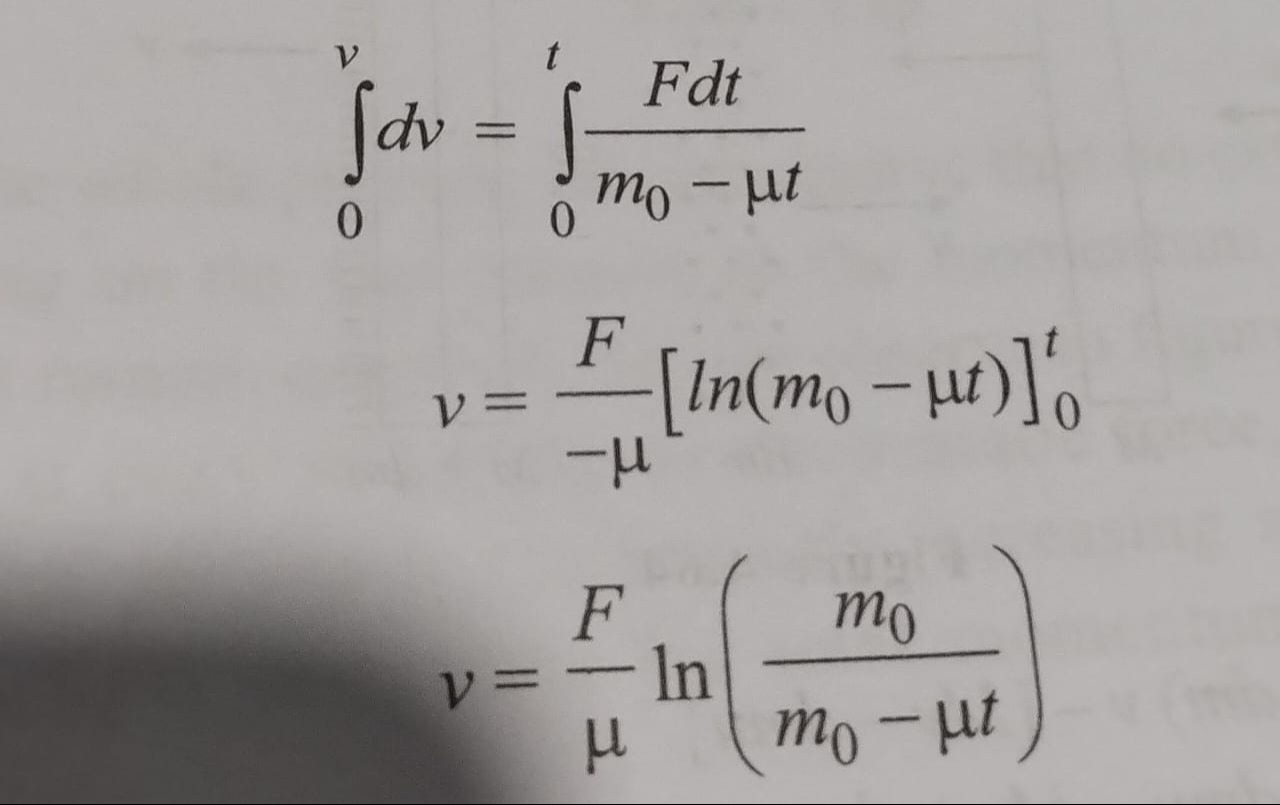Question
Question: $\int_{0}^{v} dv = \int_{0}^{t} \frac{Fdt}{m_0 - \mu t}$ $v = \frac{F}{\mu} ln(\frac{m_0}{m_0 - \mu...
∫0vdv=∫0tm0−μtFdt
v=μFln(m0−μtm0)

The derived expression for velocity v as a function of time t is: v=μFln(m0−μtm0)
Solution
The derivation involves setting up the differential equation for velocity v based on Newton's second law for a system with changing mass (m(t)=m0−μt) under a constant force F: (m0−μt)dtdv=F. This is followed by separating variables and integrating both sides from initial conditions (t=0,v=0) to general conditions (t,v). The integration of m0−μt1 yields a logarithmic term, which, after applying the limits and simplifying using logarithm properties, gives the final expression for v.
The equation of motion for an object with changing mass is generally given by m(t)dtdv=Fext+vreldtdm. In this specific problem, the given integral equation suggests a simplified scenario where the net external force is F, and the mass changes at a rate dtdm=−μ. Thus, the instantaneous mass is m(t)=m0−μt. The equation of motion becomes: (m0−μt)dtdv=F
This can be rewritten as: dtdv=m0−μtF
To find the velocity v as a function of time, we integrate this equation. Assuming the object starts from rest (v=0 at t=0): ∫0vdv=∫0tm0−μtFdt
-
Left-hand side integration: ∫0vdv=[v]0v=v−0=v
-
Right-hand side integration: ∫0tm0−μtFdt Assuming F is a constant, it can be taken out of the integral: F∫0tm0−μtdt To solve this integral, we use a substitution. Let u=m0−μt. Then, du=−μdt, which implies dt=−μ1du. When t=0, u=m0−μ(0)=m0. When t=t, u=m0−μt. Substituting these into the integral: F∫m0m0−μtu1(−μ1du) =−μF∫m0m0−μtu1du The integral of u1 is ln∣u∣. Since m0 and m0−μt represent mass, they are positive. =−μF[ln(u)]m0m0−μt =−μF[ln(m0−μt)−ln(m0)] Using the logarithm property ln(a)−ln(b)=ln(a/b): =−μFln(m0m0−μt) Using the logarithm property −ln(x)=ln(1/x): =μFln(m0−μtm0)
-
Equating both sides: The left side is v, and the right side is the result of the integration. v=μFln(m0−μtm0)
